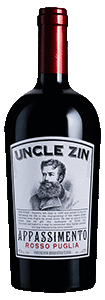Filter by
- Ripe, fruity with a hint of sweetness, this delightful Californian rosé is a real charmer£7.49 per bottleSAVE £2.50
- Rich, rewarding Zinfandel, aka Primitivo, in this big, spicy, Amarone-style red from southern Italy£14.99 per bottle
- Ripe, fruity with a hint of sweetness, this delightful Californian rosé is a real charmer£9.99 per bottle
- A gorgeous, rich, ripe and spicy, old-vine Zinfandel from California’s prized Lodi region£18.99 per bottle
- Showing (1 to 4 of 4)
1
Page 1 of 1








